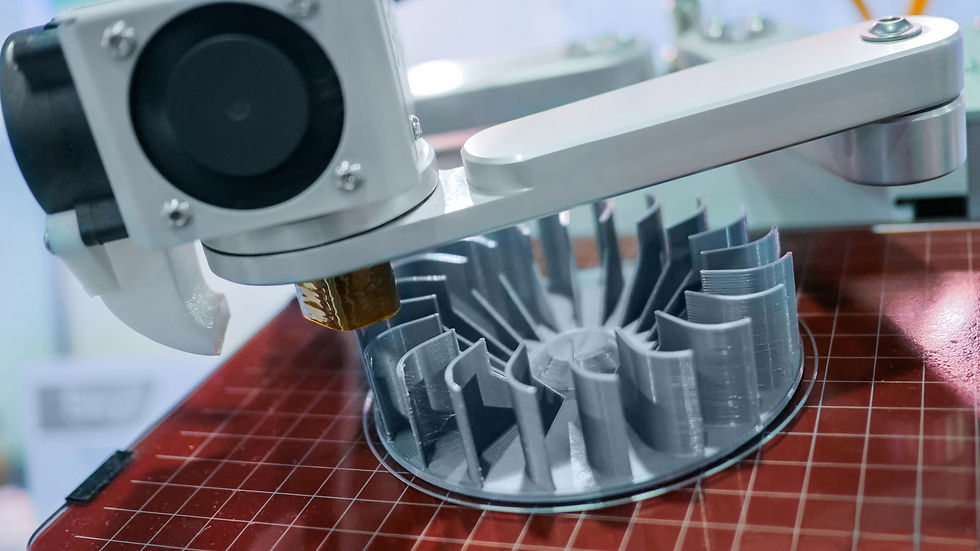Maximising Product Development Success: The Key Role of Prototyping
- Admin
- Jan 17
- 4 min read
In the fast-paced world of product development, prototyping is a critical step that can make or break the success of your project. Whether you're designing a cutting-edge tech gadget or a consumer product, prototyping allows you to test ideas, identify flaws, and refine your design before moving to full-scale production. But what exactly is prototyping, and why is it so important? In this blog post, we’ll explore the role of prototyping in successful product development and what you need to know to get the most out of this essential process.

What is Prototyping?
Prototyping is the process of creating a preliminary model or sample of a product to test its functionality, design, and usability. It’s a tangible representation of your idea that allows you to experiment, gather feedback, and make improvements before committing to mass production. Prototypes can range from simple mock-ups to fully functional models, depending on the stage of development and the complexity of the product.
Why is Prototyping Important in Product Development?
1. Reduces Risk and Saves Costs
One of the biggest advantages of prototyping is its ability to identify potential issues early in the development process. By catching design flaws or functionality problems before production, you can avoid costly mistakes and rework. Think of prototyping as an insurance policy for your product—it ensures that your final design is both viable and market-ready.
2. Improves Design and Functionality
Prototyping allows you to test different design concepts and see how they perform in real-world conditions. This iterative process helps you refine your product’s features, ensuring it meets user needs and performs as intended. For example, a prototype might reveal that a button is too small or the material isn’t durable enough, giving you the opportunity to make adjustments.
3. Enhances Communication and Collaboration
A prototype serves as a visual and functional representation of your idea, making it easier to communicate with stakeholders, team members, and potential investors. It bridges the gap between abstract concepts and tangible results, fostering collaboration and alignment throughout the development process.
4. Validates Market Demand
Before investing in full-scale production, it’s crucial to ensure that your product meets market demand. Prototyping allows you to gather feedback from potential users, test the product in real-world scenarios, and validate its appeal. This step can help you avoid launching a product that doesn’t resonate with your target audience.
Types of Prototypes
Not all prototypes are created equal. Depending on your goals and the stage of development, you might use one or more of the following types:
Concept Prototypes
Basic models that demonstrate the core idea or functionality of the product.
Ideal for early-stage brainstorming and feasibility testing.
Functional Prototypes
Fully working models that simulate the final product’s performance.
Used to test technical aspects and identify potential issues.
User Experience (UX) Prototypes
Focus on the product’s usability and interaction with the end-user.
Often used for software or digital products.
Production Prototypes
Near-final versions that closely resemble the finished product.
Used for final testing and validation before mass production.
Best Practices for Effective Prototyping
Start Early and Iterate Often
Don’t wait until the end of the development process to create a prototype. Start early and use multiple iterations to refine your design.
Focus on Key Features
Instead of trying to perfect every detail, focus on testing the most critical aspects of your product. This approach saves time and resources while still providing valuable insights.
Involve End-Users
Gather feedback from potential users throughout the prototyping process. Their input can help you identify pain points and improve the overall user experience.
Use the Right Tools and Materials
Choose prototyping methods and materials that align with your goals and budget. For example, 3D printing is a cost-effective option for creating physical models, while digital tools like CAD software are ideal for designing complex components.
Document Everything
Keep detailed records of each prototype iteration, including design changes, test results, and feedback. This documentation will help you track progress and make informed decisions.
How CRINNAC Can Help with Your Prototyping Needs
At CRINNAC, we understand the critical role prototyping plays in successful product development. Our experienced engineers and designers specialise in creating high-quality prototypes that bring your ideas to life. Whether you need a simple concept model or a fully functional prototype, we use state-of-the-art tools and techniques to ensure your product is ready for the next stage of development.
By partnering with CRINNAC, you can reduce risks, save time, and bring innovative products to market faster. Let us help you turn your vision into reality.
Prototyping is more than just a step in the product development process—it’s a powerful tool for innovation, risk management, and market validation. By investing in prototyping, you can create products that are not only functional and user-friendly but also aligned with market demand.
If you’re ready to take your product development to the next level, contact CRINNAC today. Our expertise in prototyping and engineering ensures that your ideas are transformed into successful, market-ready products.



Comments